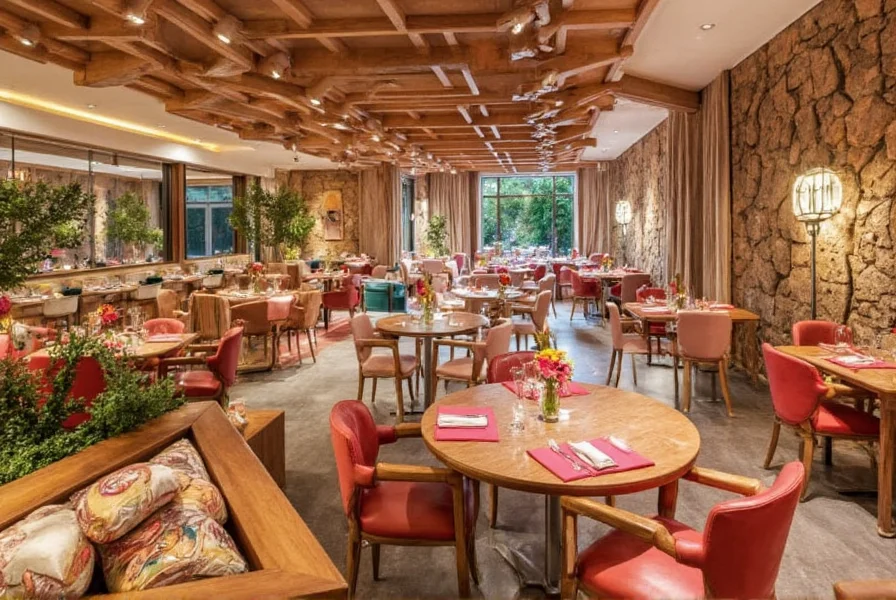When searching for 'maharajah\'s,' you're likely looking for information about Indian restaurants bearing this regal name. The word 'maharajah' (also spelled 'maharaja') originates from Sanskrit, meaning 'great king,' and was historically used for rulers of princely states in India. Restaurants adopting this name aim to evoke the luxurious dining experiences once enjoyed in royal Indian courts.
Understanding the Cultural Significance
The term 'maharajah' combines 'maha' (great) and 'raja' (king), signifying a ruler of exceptional status. During British colonial rule in India, maharajahs governed semi-autonomous regions while acknowledging British sovereignty. These royal courts were renowned for their sophisticated culinary traditions, where chefs perfected complex spice blends and cooking techniques that continue to influence Indian cuisine today.
| Region | Signature Dishes at Maharajah's Restaurants | Key Spices |
|---|---|---|
| Northern India | Butter chicken, tandoori specialties, naan breads | Garam masala, cardamom, cloves |
| Southern India | Dosa, sambar, coconut-based curries | Mustard seeds, curry leaves, tamarind |
| Western India | Vada pav, dhokla, seafood curries | Cumin, coriander, turmeric |
| Eastern India | Rasgulla, macher jhol, luchi | Panch phoron, mustard oil, poppy seeds |
What to Expect from a 'Maharajah\'s' Restaurant
Establishments named 'Maharajah\'s' typically emphasize authenticity and quality. Most feature:
- Menus organized by Indian regions rather than generic 'mild' or 'spicy' categories
- Traditional cooking methods like tandoor ovens for breads and meats
- House-made spice blends rather than pre-mixed curry powders
- Decor incorporating Indian textiles, artwork, and sometimes classical music
When evaluating a 'maharajah\'s' restaurant, look for indicators of authenticity such as regional menu specialties, knowledgeable staff who can explain dishes, and cooking techniques that preserve traditional methods. The best establishments often have chefs with direct experience in India or family culinary traditions spanning generations.

Finding Authentic Indian Dining Experiences
Not all restaurants using 'maharajah\'s' in their name deliver authentic experiences. Consider these factors when choosing where to dine:
Menu diversity: Authentic Indian restaurants typically offer distinct regional specialties rather than a generic 'Indian' menu. Look for dishes specific to Punjab, Kerala, Bengal, or other regions.
Spice approach: Rather than simply labeling dishes 'mild' or 'hot,' authentic establishments explain how spices are used to create complex flavor profiles. The best restaurants prepare spice blends fresh daily.
Staff knowledge: Servers at quality establishments can explain the origins of dishes, cooking methods, and ingredient significance. They'll make thoughtful recommendations based on your preferences rather than pushing popular dishes.
Preparation methods: Traditional techniques like tandoor cooking, slow simmering for curries, and hand-rolled breads indicate commitment to authentic preparation. Watch for menu items specifying these methods.
Evaluating Quality Beyond the Name
The presence of 'maharajah\'s' in a restaurant's name doesn't guarantee quality. Consider these evaluation criteria:
Ingredient freshness: Authentic Indian cooking relies on fresh spices, herbs, and produce. Restaurants committed to quality often highlight seasonal ingredients and may even grow their own herbs.
Culinary expertise: Look for establishments where chefs have direct experience with regional Indian cooking. Many quality restaurants feature chef biographies explaining their culinary background.
Menu evolution: While maintaining traditional recipes, the best Indian restaurants also innovate thoughtfully, creating dishes that honor tradition while incorporating contemporary techniques or locally-sourced ingredients.
Customer reviews: Read beyond star ratings to understand what regular customers appreciate. Consistent mentions of specific dishes, knowledgeable staff, and authentic flavors provide more valuable insights than generic 'good food' comments.
Common Misconceptions About 'Maharajah\'s' Restaurants
Several misconceptions surround restaurants using this regal title:
Myth: All 'maharajah\'s' restaurants serve the same type of Indian food.
Reality: Indian cuisine varies dramatically by region. A 'maharajah\'s' restaurant might specialize in North Indian, South Indian, or fusion styles.
Myth: The spicier the food, the more authentic the restaurant.
Reality: Authentic Indian cooking emphasizes flavor balance. Many traditional dishes aren't particularly spicy but feature complex spice combinations.
Myth: 'Maharajah\'s' indicates a high-end, expensive dining experience.
Reality: While some are upscale, many 'maharajah\'s' restaurants offer casual dining at moderate prices, reflecting how Indians typically eat.
Frequently Asked Questions
What does 'maharajah\'s' mean in restaurant names?
The term 'maharajah\'s' refers to restaurants named after the Sanskrit title for a great king in South Asia. These establishments typically offer authentic Indian cuisine, evoking the luxurious dining experiences once enjoyed in royal Indian courts. The name suggests a commitment to quality and traditional preparation methods.
Are all restaurants named 'maharajah\'s' authentic Indian restaurants?
Not necessarily. While the name suggests an authentic experience, quality varies significantly. Some 'maharajah\'s' restaurants offer genuine regional Indian cuisine prepared with traditional methods, while others may serve adapted versions catering to local tastes. Checking menu specifics, customer reviews, and chef credentials helps determine authenticity.
What should I look for in a quality 'maharajah\'s' restaurant?
Look for regional menu specialization rather than generic 'Indian' dishes, knowledgeable staff who can explain cooking methods, traditional preparation techniques like tandoor ovens, and fresh spice blends made in-house. The best establishments often highlight their chefs' culinary backgrounds and regional expertise.
Does 'maharajah\'s' indicate a specific type of Indian cuisine?
No, 'maharajah\'s' doesn't specify a particular regional cuisine. Indian restaurants using this name might specialize in North Indian, South Indian, or fusion styles. Check the menu for regional indicators like 'Punjabi,' 'Kerala,' or 'Bengali' to understand their culinary focus.










 浙公网安备
33010002000092号
浙公网安备
33010002000092号 浙B2-20120091-4
浙B2-20120091-4